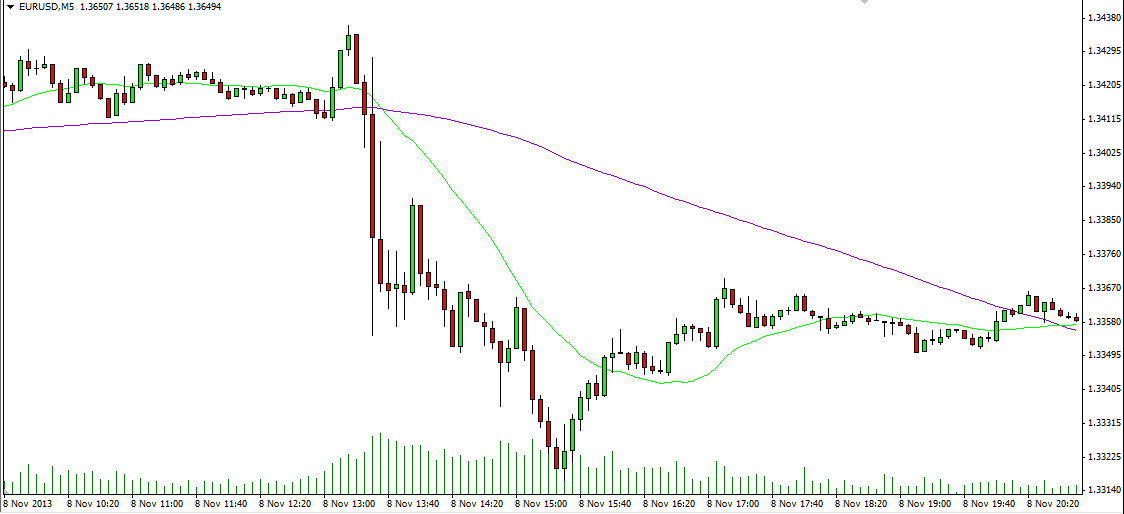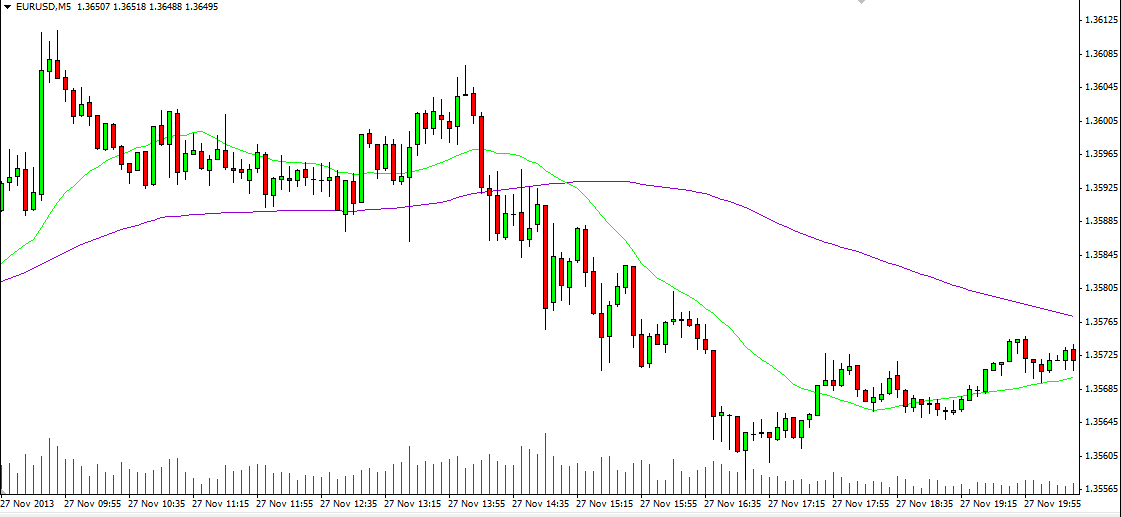Labor market
You will learn about the following concepts
- Definition and scope
- Fundamental indicators related to the labor market
- Non-farm Payrolls
- Unemployment rate
- Initial Jobless Claims
- Other indicators…
When we speak of an economy and economic growth, most people who are not familiar with the matter often picture themselves wealth and standard of living. Although this is also true, national prosperity comes as a result of an advancing and politically well-led economy, which derives its strength from solid underlying components.
The foundation and key driver for economic expansion is the labor market. A stable employment keeps an economy spiraling up and makes it less susceptible to shocks, allowing it to keep growing even during a global financial crisis and retain a high standard of living. Not only does a high unemployment rate mean that more people are jobless and without income, but an unhealthy workforce market would also leave an economy dominated by uncertainty. This would reflect on consumer sentiment and lower consumer spending, which makes up a major part of the Gross Domestic Product of a country. This is why, for example, the Federal Reserve has set lowering the unemployment rate in the US as a major requirement in order to trim its quantitative easing program, which has been a key driver of growth in the past five years.
Definition and scope
By definition, the labor market is the nominal market in which able-bodied people find paying work, employers look for willing workers and wage rates are determined. Some governments have set minimal wages, below which full-time salaries cannot fall, while others refrain from introducing such a tool.
According to their scope, labor markets can be local, national and even international. Typically countries which havent struck any trade agreements or other accords for cooperation between them have a strict visa policy, which restricts the free movement of people and also introduces labor market limitations for foreigners. Contrarily, some countries have signed agreements to ease the flow of people between them, thus forming a completely free international labor market. The brightest example is the European Union.
Labor markets are made up of smaller interacting segments for different qualifications, skills and locations, just like the great variety of employees a company needs, for example. All the different sections, which make up the labor market, depend on the exchange of information between employers and job seekers about wages, employment conditions, locations and level of competition. Basically the labor market, like any other market, is defined by supply in demand. This means that if there is a deficit for engineers in a country, in whose manufacturing sector investors pay large attention, the engineer profession will be paid better than the average and will also likely receive better employment conditions.
This leads us to the flexibility of the labor market, which reflects a companys ability to make changes in the number of employees, the number of working weekly hours, the size of wages and the influence of unions. In a flexible labor market companies are under fewer regulations and wages are defined by pure market principles, while a market with low flexibility lies under minimum wage restrictions and labor union requirements, coupled with additional social factors.
Fundamental indicators related to the labor market
Having provided a basic outline of the labor markets significance and characteristics, it is now time to turn our attention to the fundamental indicators, which actually measure its health and mark a change in the state of employment conditions. Particularly, we will be following indicators reflecting changes in the US labor market, provided by the US Department of Labor.
There are several keenly followed indicators, which allow investors to assess how good the US economy fares. These numbers are also being tracked by the Federal Reserve when conducting its monetary policy and have been appointed as one of the main gauges for measuring the economys health. Some of the employment data is of highest importance, while other have a medium level of significance. They are as follows:
– Non-farm Payrolls
– Unemployment Rate
– Average Hourly Earnings
– Average Workweek
– ADP Non-farm Employment Change
– Initial Jobless Claims
The first four indicators listed above are released in a monthly employment report by the US Department of Labor called the Employment Situation, or simply the jobs report. It is published on the first Friday of each month at 8:30 ET (13:30 GMT) and includes information for the previous month. The Non-farm Payrolls and Unemployment Rate are considered as having the greatest importance, while Average Hourly Earnings and Average Workweek have a medium impact on the markets.
Non-farm Payrolls
Non-farm Payrolls is the most important and largely tracked piece of data released in the jobs report. The figure reflects the change in non-farm payrolls, compared to the previous month. A rise in the number means that US employers created more jobs in the respective month from the previous one and vice versa. It represents the total number of US employees in any business, excluding the following four groups:
– farm employees
– general government employees
– employees of nonprofit organizations
– private household employees.
The reading released most often varies between + 10 000 and as much as + 250 000 at times when the US economy is coping well. Despite the volatility and the possibility for large revisions, the non-farm payrolls indicator presents the most timely and comprehensive reflection of the current economy state. Total non-farm payrolls account for 80% of the workers who produce the entire Gross Domestic Product of the United States.
A positive change in the non-farm payrolls, especially if it exceeds projections, provides strong support for the US dollar, pressuring its counterparts. Such a sudden and very sharp move can be observed in the screenshot below, which has captured the release of Octobers non-farm payrolls.
 Source: MetaTrader 4 by MetaQuotes
Source: MetaTrader 4 by MetaQuotes
On November 8th 2013, the US Labor Department reported that US employers added 204 000 workers to payrolls in October, defying analysts expectations for a drop to 120 000 from a month earlier. Also adding to bullish sentiment, Septembers reading received an upward revision to 163 000 form initially estimated at 148 000. This, coupled with the unemployment rate meeting expectations and personal income outstripping projections, led to a decline in the EUR/USD of more than 100 pips before consolidation followed a bit later.
Unemployment rate
The unemployment rate is the second most keenly awaited employment indicator released in the Employment Situation report. The figure represents the percentage of the eligible work force that is unemployed, but is actively seeking employment. It is calculated on a monthly basis. This is an indicator of major significance, causing wide fluctuations on the financial markets.
A person who is not classified as employed or unemployed is excluded from the statistics. One counts as unemployed if he falls in all of the following categories:
– unemployed for the last week
– able bodied
– has been seeking employment for a period of at least four weeks, which end in the week when the research is being conducted. People who have been laid off and are awaiting to be rehired are also counted as unemployed.
Higher unemployment rate is something which every government is trying to avoid as it leads to a reduction in consumer spending, which makes up around 70% of the US Gross Domestic Product. Not only does a higher unemployment rate mean that more people are jobless and have no income, which directly impacts consumer spending, but also an unhealthy labor market leads to loss in consumer confidence, which affects even the actively employed people.
Although a high unemployment rate is devastating for economy growth, too low unemployment should also be avoided as it spurs inflation and pushes salaries up, potentially causing the economy to overheat. A jobless rate of around 4-6% is considered as healthy. Having that said, we can conclude that inflation and unemployment have an inverse relation, as described by the Philips curve.
Average Workweek
The Average Workweek, also referred to as Average Weekly Hours, measures the average number of hours worked by employees on non-farm payrolls. It is often an underrated indicator but it is an important determinant of industrial production and personal income.
Changes in the Average Workweek cause a medium reaction on the financial markets.
Average Hourly Earnings
The Average Hourly Earnings indicator measures the change in the businesss labor expenditures on a monthly basis, excluding the agricultural sector. Coupled with the Average Weekly Hours, Average Hourly Earnings provides us with an indication of personal income growth during the respective month and is also closely observed during times of heightened economic activity for signs of increasing wage pressures.
Like the previous indicator, Average Hourly Earnings is also a medium-volatility gauge.
ADP Non-farm Employment Change
The ADP Non-farm Employment Change is another high-volatility indicator, published monthly by the ADP Research Institute in close collaboration with Moodys Analytics.
It is based on actual transaction data encompassing 400 000 business clients from the 19 main economic sectors and provides a monthly snapshot of the US non-farm private sector employment.
This indicator is calculated according to the same methods the Bureau of Labor Statistics uses. It is published every month, two days before the official BLS employment rate data and is a good predictor of the governments non-farm payroll statistics.
As logic dictates, a rise in employment should be considered as bullish for the US dollar, especially if the reading exceeds expectations.
Initial Jobless Claims
Initial Jobless Claims reflects the number of people who filed applications for unemployment benefits for the first time during the previous week. A drop in the jobless claims means that fewer people have lost their jobs in the tracked period, indicating a strengthening in the labor market and vice versa.
This indicator spurs very strong short-term movements after its release, particularly when it exceeds or even confounds analysts projections. The following screenshot has captured an exact such event.
 Source: MetaTrader 4 by MetaQuotes
Source: MetaTrader 4 by MetaQuotes
The picture above reflects a report by the US Department of Labor on November 27th 2013, which shows that Initial Jobless Claims fell to 316 000 in the seven days through November 23rd. Not only did they fall, but the reading also defied analysts projections for a jump to 330 000 from the preceding periods upward revised 326 000.
If you take a look at the economic calendar for November 27, you will see that the Initial Jobless Claims numbers coincide with the release of Octobers Durable Goods Orders, an indicator with a status of market mover, which posted worse than expected. However, in this case the applications for initial unemployment assistance seem to have outweighed the industrial data, as you can see from the strengthening of the US dollar.
Although Initial Jobless Claims are considered as a medium-volatility indicator by some analysts, they are closely watched as they provide intra-month information about the state of the labor market. However, one week is a very short period of time, meaning that high volatility is often seen. Economists use the four-week average Initial Jobless Claims indicator to iron out week-to-week volatility.
Another measure of the labor market are the so-called Continuing Jobless Claims, which however is an indicator of lesser volatility and doesnt have such an impact on the market. Continuing Jobless Claims reflects the number of unemployed people who qualify for benefits under unemployment insurance and have already been receiving unemployment assistance for a while.